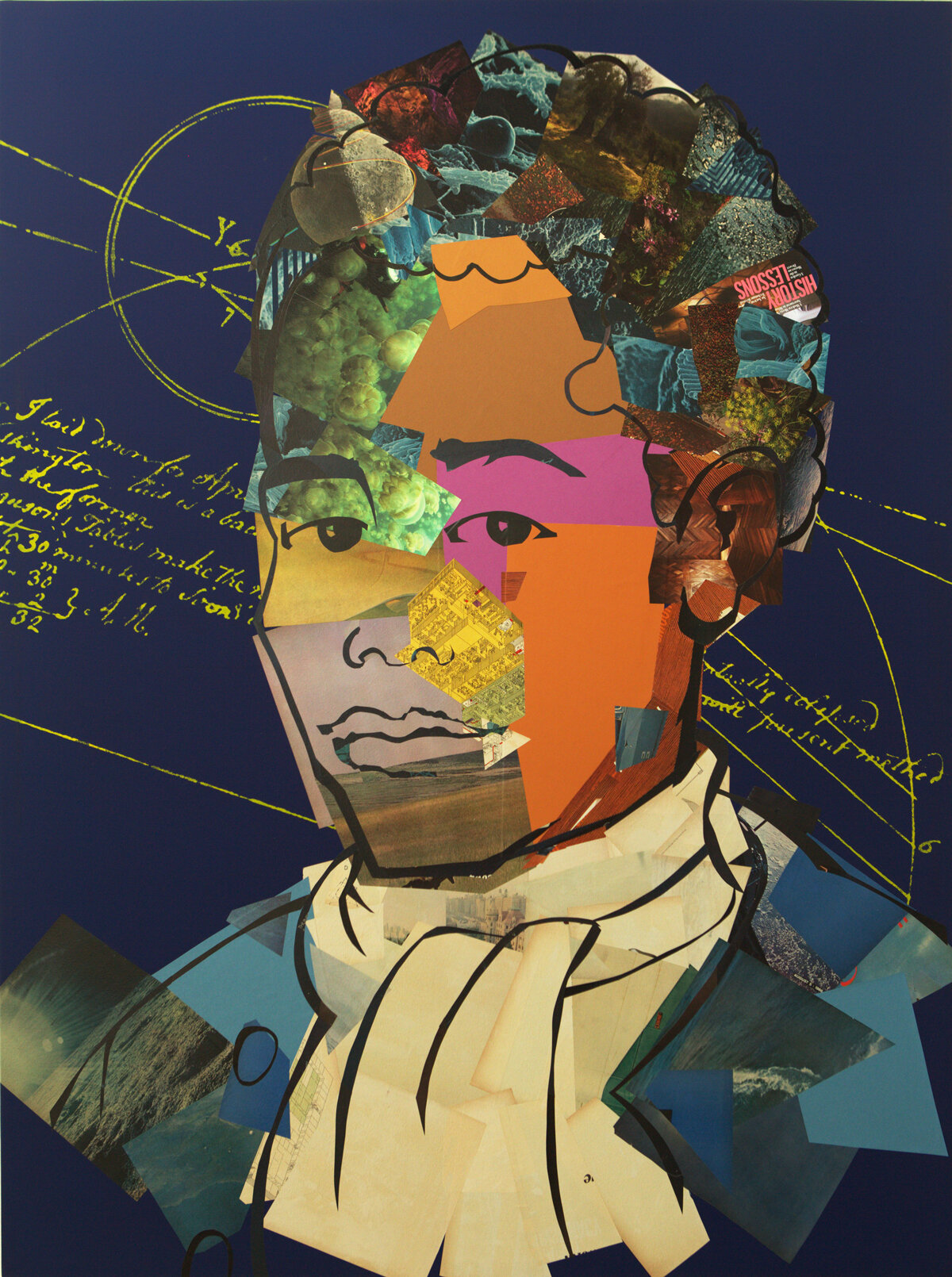Banna-Ka
Banna-Ka
[Benjamin Banneker]
54” x 72” Acrylic and collage on canvas
2019
Collection of the District of Columbia
Washingtonians hear the name Benjamin Banneker, and vaguely associate him with the layout of the District of Columbia. But not much detail is known about this quiet genius whose contributions to mathematics and astronomy would be uplifted alongside Da Vinci or Galileo if he were not of African descent in 18th century America. I have spent the better part of this year researching Banneker’s significant contributions to Washingtonian history in order to produce a portrait that honors his legacy and connection to the city.
Banneker himself was a child prodigy. He would not own a book until he was over 30 years old, yet the almanac that he published would become world-renowned. His first gained notoriety when, still a teenager, he built a clock made out of wood, that struck every hour on the hour—without ever even seeing such a clock for reference! At that time, there were only three people in America known to have the skills to build clocks or watches, and all had been trained extensively in Europe. Banneker’s clock, composed completely from wooden components that he carved himself, struck accurately for over 50 years until his death.
Few know that Banneker’s grandfather was actually an African prince and that his wife, Banneker’s grandmother, was a European landowner near what is now Ellicott City, Maryland. The Banneker surname, as it appears on his almanacs, comes from his grandfather’s name, Banaka (Banna-Ka). I believe Banaka was of the Dogon people from modern-day Mali, West Africa. I conjecture that the name translates approximately to “Finished Soul”, “Evolved Soul”, or one’s “Highest Energy.” Banna in the Dogon language, means “through”, as in, finished, fulfilled, and complete. It also is used mathematically as a term for “measurer.” Ka, with ancient Kemetic roots, is most commonly translated into the concept of the soul or vital energy that composes our personality or selfhood. Ka, in relation to its Nilo-Saharan roots of the Dogon language, also translates into “house,” related to the concept of self being the house of the soul. Furthermore, the Dogon are known for a highly sophisticated and complex cosmology and astronomical knowledge. Aspects of this knowledge are apparent in Banneker’s own studies and in the layout of the District. I believe, based on my research, that the Banna-Ka name therefore speaks to the regal and enlightened lineage that influenced Benjamin Banneker.
Portraits of Banneker are few and far between, and have typically been derivative versions of one particular engraving that was not likely drawn from life. I used elements of this engraving (as it was purportedly drawn from life) merged with physical descriptions of him and my own imagination. I offer a portrait of a young man of about 19 years old. This is the age at which he built his clock, before his name and his studies would become more widely known. By depicting him in youth, this image can inspire young people to imagine their own greatness that may one day change the course of history.
